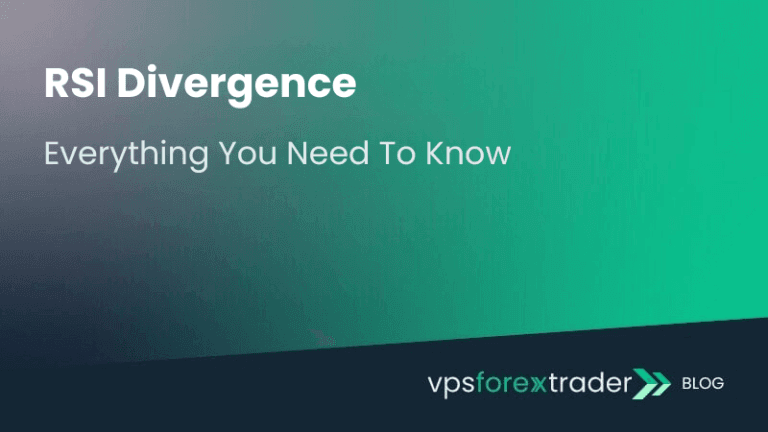If you’re looking for new ways to invest your money, forex trading (FX) can be an option for both beginner and seasoned traders. Forex trading, short for foreign exchange trading, is based on the buying and selling of currencies in the global foreign exchange market.
The forex market is the largest financial market in the world, with an estimated value of $2.4 quadrillion. Before you dive headfirst into trading, we have prepared a guide on forex trading and everything you need to know about this type of investment.
What is Forex Trading?
Forex traders buy and sell currencies on the global foreign exchange market. Traders exchange one currency for another, trading in pairs like USD/EUR or GBP/JPY. If this sounds confusing at first, don’t worry.
In fact, most people have traded forex at some point. If you’ve ever traveled abroad and exchanged your currency for the local one, you have done a forex trade. Of course, at that time you probably didn’t try to strategically score a better rate.
Unlike stock markets, forex trading operates 24 hours a day, five days a week – from Sunday to Friday. To start trading, you need to find a reputable broker, create an account, download a trading platform, and make your first exchange.
The main goal of trading forex is to benefit from currency fluctuations and exchange them at the best possible moment for a stronger currency. Unlike investing in exchange-traded funds (ETFs) like the S&P 500, which might take years and huge investments to bring significant profit, with forex you can start with as little as $10 and almost instantly get the returns of your trade.
How Does Forex Trading Work?
Forex trading isn’t attached to any particular stock exchange. Instead, it’s monitored by a decentralized global network of banks and financial institutions. This might give you more flexibility but can also lead to more volatility.
Here’s a basic rundown of how forex trading works:
- You choose a currency pair to trade. One of the most popular options is EUR/USD, but you might choose to trade your local currency against another.
- You decide how much money to trade and when. If you’re trading EUR to USD, it means you’re selling euros for U.S. dollars. Let’s say you have 100 EUR, and the exchange rate is 1.1800 USD per EUR. You sell 100 EUR and receive 118 USD.
- If, fortunately, the market moves in your favor and the EUR/USD rate drops to 1.1750, you can buy back the 100 EUR with a gain. At the new rate of 1.1750, you need: 100 EUR × 1.1750 = 117.50 USD.
- You received 118 USD when you sold, and you spent 117.50 USD to buy back, so your profit is 118 – 117.50 = 0.50 USD.
Of course, this is a small profit, but every gain counts, especially in trading. However, this is a favorable scenario. It can go both ways. You should always keep in mind the risks, your leverage, and unexpected market changes that can affect your investments. To make trading easier, you can also choose a Forex VPS hosting. This way, you can have a dedicated server just for you to avoid network interruptions.
How to Trade Forex: Tips and Strategies
Tips and strategies for successful forex trading for beginners are similar to any other investment.
The first step: educate yourself
To understand how to trade forex, you should learn as much as possible about forex markets, trading strategies, and risk management. You can read blogs about forex trading, watch YouTube videos, attend courses, and network with other traders to understand the intricacies of the market.
Step two: practice with virtual money
Some forex trading platforms offer demo accounts where you can practice trading with virtual money. It’s a great opportunity to learn trading skills without any risks.
Step three: choose a reliable broker
Before importing any funds to any trading account make sure to find a reliable broker. Check their offering, conditions, regulations, and compliance. Also, read online reviews to be sure your money is safe. If you’re using VPS for a better trading experience, also find the best method for you. Most traders choose between Forex VPS vs. regular Windows VPS.
Step four: manage your risks
Like with any other investment, you shouldn’t go too big. The best strategy is to diversify your portfolio and never risk more than 1-2% of your trading capital on a single trade. As a beginner, you might also want to start with low sums. As mentioned before, starting with $10-100 just to dip your toes in can be a safer strategy in the long run.
Common Forex Trading Terms and Definitions
As a beginner forex trader, you should learn a few terms and definitions to help you feel more confident among the pro traders. Here are a few:
- Pip or percentage in point: The smallest price move in forex, usually the fourth decimal place. For example, if the EUR/USD moves from 1.1800 to 1.1801, that’s a one-pip movement.
- Spread: The difference between the buy (ask) and sell (bid) price of a currency pair. For example, if the EUR/USD bid price is 1.1800 and the ask price is 1.1801, the spread is 1 pip.
- Base and quote currency: In EUR/USD, EUR is the base and USD is the quote currency.
- Long/short: Going long means buying; going short means selling.
- Slippage: The difference between the expected and actual trade execution price. It can be positive or negative.
- Swap: Interest paid or earned for holding a position overnight.
- Volatility: The degree of variation in a trading price over time.
- Liquidity: The ease with which a currency can be bought or sold.
You might also notice that experienced traders have nicknames for the currency pairs. Here’s what they mean:
- EUR/USD – The Fiber
- GBP/USD – The Cable
- AUD/USD – The Aussie
- USD/JPY – The Gopher
- EUR/GBP – The Chunnel
FAQ
What is a forex trader?
A forex trader is a person or entity that participates in the foreign exchange market. They buy and sell currencies, as well as analyze the market. A forex trader can be an individual, investing for their own profit, or a professional trader, working for banks, hedge funds, or large corporations.
What are the most traded forex pairs?
EUR/USD, GBP/USD, USD/JPY, and USD/CHF.
What are the risks involved in forex trading?
- Market risk due to fluctuations in currency values.
- Leverage risks when small market movements lead to large losses quickly.
- Interest rate risk as interest rates increase or drop across the world.
- Fraud risks when you trade with poorly regulated brokers.
There are many more risks involved in forex trading. So before making any decision, make sure you can manage risks without losing too much money or going into debt.






